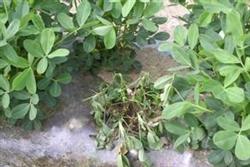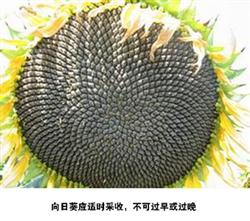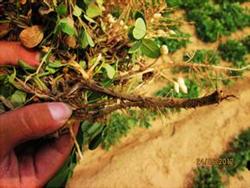Integrated Control of Peanut Fusarium Wilt covered with plastic Film in early Spring

Peanut wilt includes many diseases, such as blight, root rot, white silk disease, stem rot and so on, which seriously affect the production of peanut covered with plastic film in early spring. First, the common characteristics of the disease are that the stems or leaves of peanuts wither and become discolored and necrotic. In general, the disease is serious in the continuous cropping land and the land with poor soil quality, and the disease is light in the land with high fertility and good soil quality. During the flowering period, the disease is serious in high temperature and heavy rain, especially when it clears up after the rain, the infected peanut seedlings will soon wither and die. Second, prevention and control methods for the prevention and control of this kind of disease, it is best to implement the method of prevention and comprehensive control. 1. Selecting disease-free seeds and disease-resistant varieties should remove mildew, discoloration, injured and shrivelled seeds before sowing, select disease-free and full seeds, and pay attention to selecting disease-resistant varieties, such as Wanhua No. 2, which is resistant to green and withered. 2. The plots with light incidence of rotation can be rotated every other year to adapt to the characteristics of peanut like new soil, the seriously affected plots should replant peanuts every 2-3 years, and flood-drought rotation can be carried out if conditions permit. 3. Deep ploughing and improving soil, applying net fertilizer to shallow sandy soil, it is necessary to deeply increase fertilizer and cultivate fertility, so as to create good growth conditions for plants and enhance plant resistance. At the same time, deep ploughing can bury sclerotia and reduce the source of bacteria. The application of organic fertilizer should be retted to make it mature and try not to apply bacteria-carrying fertilizer. 4. When applying plant ash and lime to prepare the soil before sowing, applying plant ash 50kg / mu and lime 25kg / mu can not only enhance the disease resistance of strong plants, but also kill germs and achieve the purpose of disease prevention. It can be applied again at flowering stage. 5. The seed can be mixed or soaked with 50% carbendazim wettable powder, and the dosage is 1% of the seed weight. After emergence, pay attention to check, find diseased plants, pull up the roots in time, take them out of the field, concentrate on treatment, and prevent spread. Alternate irrigation of water with carbendazim glue suspension and agricultural streptomycin, about 250 grams per cup, to control bacteria and nearby healthy plants without disease.
- Prev

How to grow sunflowers with high yield?
Some netizens called: now my hometown is planting sunflowers in a large area for rural tourism, but the local sunflowers have no experience. How can we grow good-looking and high-yielding sunflowers? Answer: sunflower to obtain high benefit from several aspects: a. Land selection and soil preparation of sunflower is not very strict with the previous requirements, except sugar beet.
- Next

What is the benefit of organic fertilizer to the growth and development of peanut?
What is peanut inverted seedling disease? Peanut inverted seedling disease is also called peanut stem rot and foot rot. The injured cotyledons were dark brown before the seedlings were unearthed. The pathogen invaded the base of the plant stem along the cotyledon petiole, producing yellow spots at first, and then turning brown. The development of the disease spot causes the stem base tissue to rot. When the spot expands around the base of the stem, the ground wilts.
Related
- The first cup of black tea in spring, the flavor and history of tea gardens in Kenya, Africa
- The computer can not only choose potatoes, but also grow tea rice. AI will grow winter oolong tea champion.
- It is not only the inflated tea bitten by insects, but also engraved with the four seasons tea in Beipu.
- The Oriental Beauty Tea Festival in Zhuxian County takes the stage at the weekend to experience the plus-size feast of oil tea.
- & quot; Oriental Beauty Tea & Exploration of Emei in Hsinchu, the hometown of quot;
- The new variety of strawberry "Tainong 1" dessert is the first choice with mellow aroma. Crimson gorgeous
- History of Tea in Taiwan: from Wild Inner Mountain to Export Tea Garden
- Two types of Taiwan Oriental Beauty Black Tea won the British three-Star Award for Childhood Tea Xiang Zhang Jiaqi changed from pilot to champion tea maker.
- Banana species and varieties: the planting history of Taiwan Xianren banana and dwarf banana is long, is banana disease resistant?
- Coffee planting Technology: Qianjie Coffee from Seedling to harvesting

